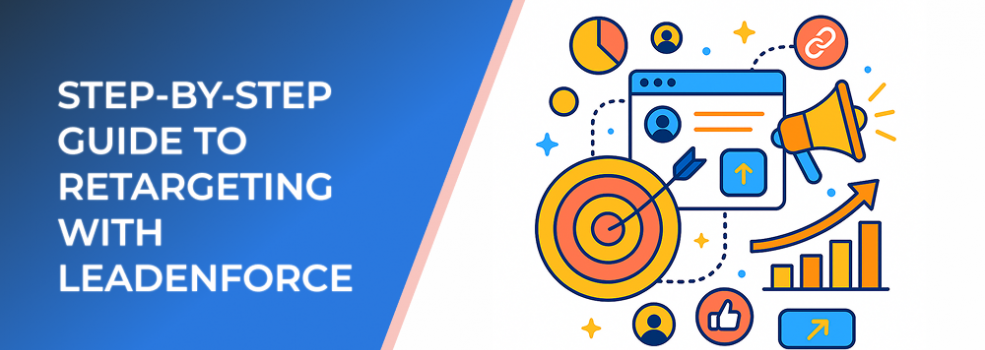Retargeting is one of the most powerful digital marketing strategies available today. According to AdRoll, website visitors who are retargeted are 70% more likely to convert than those who aren’t. LeadEnforce makes this process simple and data-driven, enabling marketers to reach warm audiences across platforms like Facebook, Instagram, and LinkedIn with high precision.
This guide will walk you through each step of setting up and optimizing your retargeting campaigns using LeadEnforce.
Step 1: Install the LeadEnforce Pixel
The first step to successful retargeting is setting up the LeadEnforce Pixel on your website. This small piece of code tracks user behavior, helping you identify which visitors engaged with your site but didn’t convert.
Pro Tip: Ensure your pixel is installed on every page where key actions occur (e.g., product pages, checkout, signup forms). This helps capture the most comprehensive audience data.
Step 2: Build Your Custom Retargeting Audience
Once your pixel collects data, you can create segmented retargeting audiences based on user activity. For example:
-
Users who viewed a product but didn’t add it to the cart.
-
Users who abandoned their shopping cart.
-
Users who visited your site in the last 30 days.
LeadEnforce allows you to define these audiences with great precision, increasing the relevance of your ads and improving your ROI.
Statistic: Retargeted ads can lead to a 147% higher conversion rate compared to standard display campaigns.
Step 3: Design Personalized Ad Creatives
The success of retargeting campaigns often depends on personalization. Use dynamic creatives that remind users of the specific products or services they interacted with. For instance, showing the same item a user viewed earlier creates a sense of familiarity and encourages them to return.
Tip: Test multiple versions of your ad copy and visuals. Even small tweaks can lead to noticeable improvements in CTR and conversion rates.
Step 4: Set Up Frequency Caps
Retargeting is powerful, but overexposure can cause ad fatigue. With LeadEnforce, you can set frequency caps to control how often users see your ads.
Data Insight: Studies show that seeing an ad 3–5 times is the optimal exposure range to maximize recall and minimize annoyance.
Step 5: Monitor and Optimize Performance
Once your campaign is live, use LeadEnforce’s analytics dashboard to monitor key metrics such as reach, CTR, conversions, and cost per action. Adjust audience definitions, creative variations, and frequency caps based on your data insights.
Statistic: Marketers who continually optimize their retargeting campaigns see up to 50% lower cost per acquisition compared to static campaigns.
Step 6: Expand to Lookalike Audiences
After achieving consistent results with your retargeting campaigns, leverage your successful audience data to create lookalike audiences. LeadEnforce allows you to build these groups automatically based on your best-performing customer segments, helping you reach new, high-quality prospects.
Conclusion
Retargeting is not just about reminding users of your brand—it’s about strategically guiding them back to conversion. With LeadEnforce, the process becomes seamless, data-driven, and scalable.
Start today and watch your conversions grow by re-engaging the audiences that already know your brand.
You may also like:

